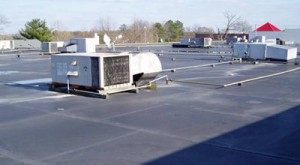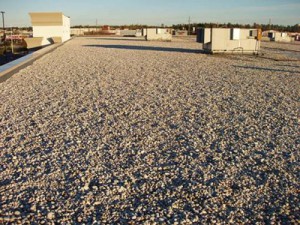EPDM Roofing System
EPDM (ETHYLENE PROPYLENE DIENE TERPOLYMER) roofing systems are composed of a single ply thermoset sheet in which the molecules are chemically cross-linked together to give it its strength and stability. EPDM Roofing sheets are factory formed and then “cured” or vulcanized to cause the cross-linking to occur. They are usually 45 or 60 mill membranes installed on the roof either fully adhered, mechanically fastened or loose laid and ballasted with 10 lbs of 1 ‘/2” round river rock per sq. ft. The membrane generally comes in either black or white. Other colors are available with some manufacturers.
The EPDM Roofing sheet comes in various widths up to forty or more feet with some manufacturers. The material looks very much like inner tube material only thicker and is indeed manufactured by the same companies that make inner tubes. With the introduction of the butyl based seam tape for the seams, as opposed to the contact cement which was the original method, the EPDM Roofing system is an excellent roof system for most applications. Click here for technical information.
For more information please call our roofing professionals at (303) 971-0256 or Click Here to request a free quote.





